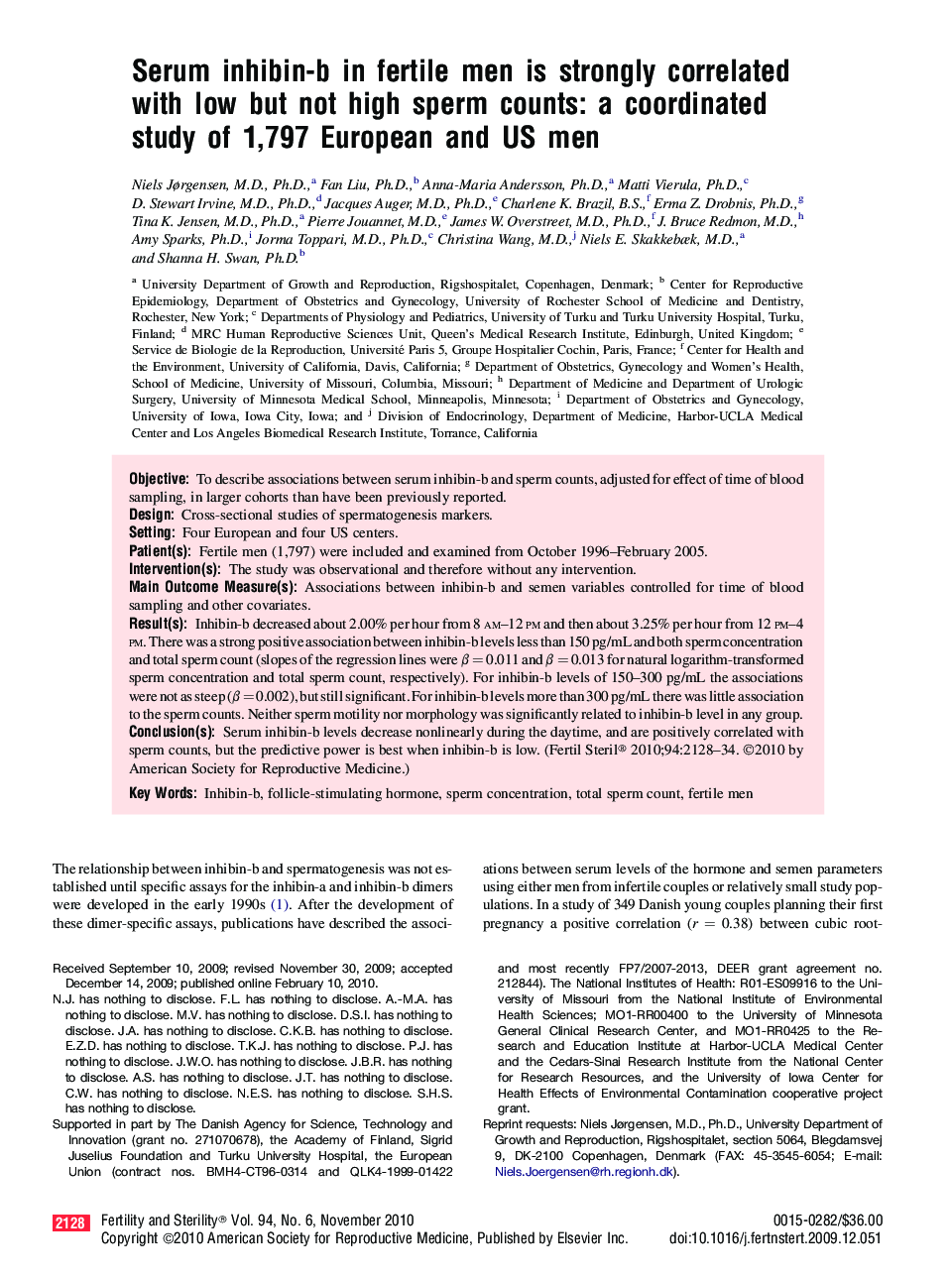| کد مقاله | کد نشریه | سال انتشار | مقاله انگلیسی | نسخه تمام متن |
|---|---|---|---|---|
| 3932834 | 1253337 | 2010 | 7 صفحه PDF | دانلود رایگان |

ObjectiveTo describe associations between serum inhibin-b and sperm counts, adjusted for effect of time of blood sampling, in larger cohorts than have been previously reported.DesignCross-sectional studies of spermatogenesis markers.SettingFour European and four US centers.Patient(s)Fertile men (1,797) were included and examined from October 1996–February 2005.Intervention(s)The study was observational and therefore without any intervention.Main Outcome Measure(s)Associations between inhibin-b and semen variables controlled for time of blood sampling and other covariates.Result(s)Inhibin-b decreased about 2.00% per hour from 8 am–12 pm and then about 3.25% per hour from 12 pm–4 pm. There was a strong positive association between inhibin-b levels less than 150 pg/mL and both sperm concentration and total sperm count (slopes of the regression lines were β = 0.011 and β = 0.013 for natural logarithm-transformed sperm concentration and total sperm count, respectively). For inhibin-b levels of 150–300 pg/mL the associations were not as steep (β = 0.002), but still significant. For inhibin-b levels more than 300 pg/mL there was little association to the sperm counts. Neither sperm motility nor morphology was significantly related to inhibin-b level in any group.Conclusion(s)Serum inhibin-b levels decrease nonlinearly during the daytime, and are positively correlated with sperm counts, but the predictive power is best when inhibin-b is low.
Journal: Fertility and Sterility - Volume 94, Issue 6, November 2010, Pages 2128–2134